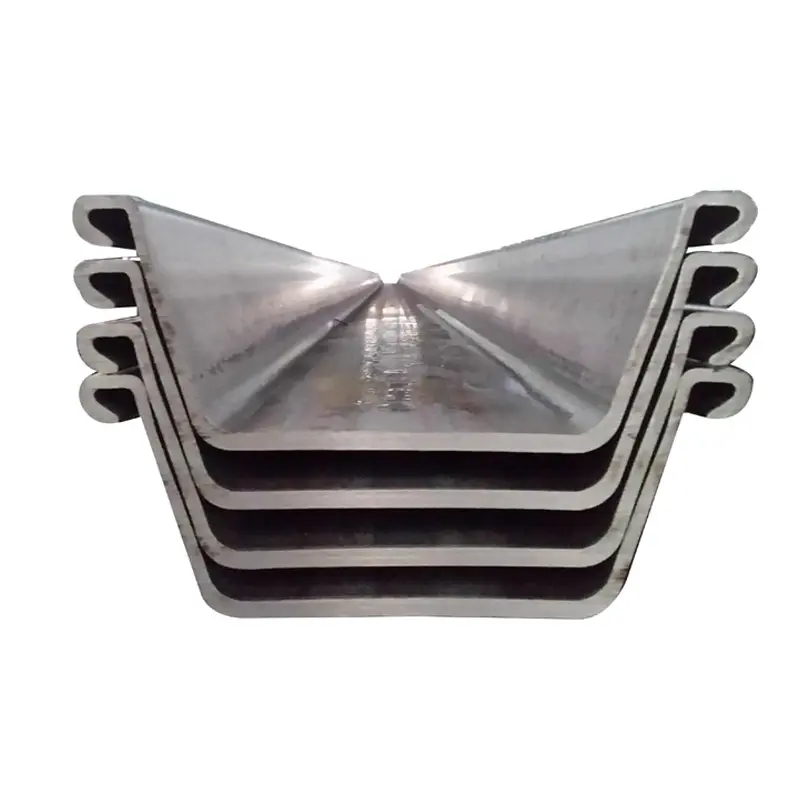Port engineering steel sheet pile is a specialized structural component designed for the harsh marine environment, providing stable foundations for wharves, breakwaters, quay walls, and harbor structures. These sheet piles must withstand dynamic loads from ships, tidal fluctuations, saltwater corrosion, and extreme weather conditions, requiring advanced material selection and manufacturing techniques. Common materials include high strength low alloy (HSLA) steel grades with improved corrosion resistance, such as ASTM A1018 or Chinese Q345C, often combined with sacrificial anodes or complex coating systems (zinc aluminum alloys, epoxy primers) to combat chloride induced corrosion. The cross sectional design typically features deep web profiles like U type or Z type with enhanced moment of inertia, enabling them to resist large bending moments from lateral soil and water pressures. Manufacturing processes emphasize precision in interlock geometry to ensure watertight connections, with non destructive testing (ultrasonic or magnetic particle inspection) used to verify weld integrity in hot rolled piles. Installation in port projects often involves heavy duty equipment such as hydraulic vibratory hammers or crawler cranes, with careful consideration of seabed topography and soil stratigraphy to avoid installation induced damage. Engineering design incorporates finite element analysis (FEA) to model cyclic loading from ship berthing, wave forces, and long term creep in soft marine clays. Corrosion protection strategies may include cathodic protection systems for submerged zones and thick polymer coatings for splash zones, extending service life in aggressive saltwater environments. International standards like Eurocode 3 and API RP 2A guide the design and installation, ensuring compliance with safety factors for extreme load cases. Port engineering sheet piles also play a key role in environmental sustainability by enabling modular construction that minimizes seabed disturbance and facilitates future harbor expansion. Their reliability is critical for maintaining port operability, as downtime due to structural failure can cause significant economic losses. Ongoing research focuses on developing smarter sheet piles with embedded sensors for real time corrosion monitoring and load assessment, integrating into the Internet of Things (IoT) for predictive maintenance in smart port systems.


